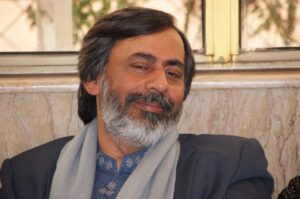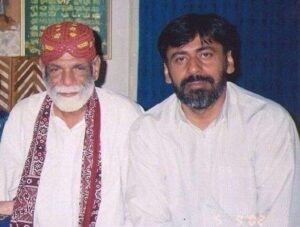Remedy Blood Pressure
Introduction
Blood pressure management is crucial for maintaining overall health and preventing a range of cardiovascular diseases. This blog explores the intricacies of blood pressure, its causes, comprehensive management strategies, and introduces The Ultimate Remedy, a unique audio therapy that offers an innovative approach to blood pressure management.
Understanding Blood Pressure
Blood pressure is the force exerted by circulating blood against the walls of blood vessels. It is a vital indicator of cardiovascular health.
The Two Numbers
Systolic Pressure: The higher number, indicating the pressure when the heart beats.
Diastolic Pressure: The lower number, representing the pressure when the heart is at rest.
Normal blood pressure is typically around 120/80 mmHg. Deviations from this range can indicate health issues.
Causes of Blood Pressure Variations
Several factors contribute to changes in blood pressure:
Lifestyle Factors
Diet: High salt intake, excessive alcohol consumption, and a diet rich in unhealthy fats can elevate blood pressure.
Physical Inactivity: Lack of regular exercise contributes to the development of hypertension.
Obesity: Excess body weight is a significant risk factor for high blood pressure.
Health Conditions
Genetic Predisposition: A family history of hypertension increases the risk.
Age: The risk of hypertension increases with age.
Other Medical Conditions: Diseases like diabetes and kidney disease can affect blood pressure.
Environmental and Psychological Factors
Stress: Chronic stress can lead to temporary or sustained increases in blood pressure.
Sleep Disorders: Conditions like sleep apnea can impact blood pressure.
Comprehensive Management Strategies
Effectively managing blood pressure involves a holistic approach:
Medical Interventions
Medications: Various drugs are available to regulate blood pressure, including diuretics, ACE inhibitors, and beta-blockers.
Regular Monitoring: Keeping track of blood pressure readings is essential for effective management.
Lifestyle Modifications
Dietary Changes: Adopting a heart-healthy diet, like the DASH diet, which is low in salt and rich in fruits, vegetables, and whole grains.
Regular Exercise: Engaging in moderate physical activity, like walking, swimming, or cycling.
Weight Management: Maintaining a healthy weight through diet and exercise.
Stress Reduction: Techniques like meditation, yoga, and mindfulness can help manage stress levels.
The “Ultimate Remedy” An Alternative Approach
The Ultimate Remedy offers a novel method to support blood pressure management through audio therapy. It uses the power of sound and positive intention to promote relaxation and overall well-being.
How It Works
Soothing Sound Frequencies: Targets specific frequencies to induce relaxation, potentially aiding in blood pressure reduction.
Intentional Focus: Utilizes positive affirmations to enhance mental health and stress resilience.
Using The Ultimate Remedy
Download the Therapy: Available through links on the website.
Structured Listening Routine: Follow the instructions for regular listening sessions.
Support and Assistance: For questions, reach out to help@mastmasthealers.com.
Happy Patients
Years since day one
%
Satisfaction
Testimonial
How to Listen to the Ultimate Remedy:
Download the Ultimate Remedy audio from our website or app. It’s free and accessible to all.
- Choose a quiet, comfortable space where you won’t be disturbed.
- Close your eyes and visualize yourself in the presence of your higher power or the essence of the universe.
- Listen to the audio with great concentration and closed eyes.
- After the audio is finished, open your eyes and take half a glass of water.
- Close your eyes again and say “your name” or a word that represents your belief (such as “God”, “Universe”, or “Love”) three times in your heart.
- Drink the water with closed eyes in three sips.
- For optimal results, it’s recommended to listen to the Ultimate Remedy three times a day (morning, evening, and before sleeping) for seven consecutive days.
About the Creator – Syed Safdar Hussain Bukhari
Introduction and Early Life
Syed Safdar Hussain Bukhari, also known as Kakian Wali Sarkar, was a unique example of kindness, devotion, and tenacity. Born on May 6th, 1940, he dedicated his life to serving humanity and providing relief to those suffering from various ailments.

Social Work and Spiritual Journey
Between 1960-1980, he engaged in social work by undertaking road repairs, establishing schools, and arranging medical supplies in Lilla Town. In 1990, he left his ancestral home and family wealth to move to Lahore, where he comforted the depressed and saddened through mystic dance and music.
The Ultimate Remedy
In 1998, Baba Bukhari’s research led to the discovery of “The Ultimate Remedy,” a blessed audio that he believed could cure physical, psychological, spiritual, and supernatural problems. The remedy involved listening to the audio three times a day for seven consecutive days, followed by a specific water ritual. This method claimed to cure various ailments, including coronavirus, AIDS, cancer, drug addiction, worldly problems, and psychological issues.
Legacy and Death
Baba Bukhari’s research and unconditional love left a lasting impact on humanity, providing positive thinking, peace of mind, health, fearless life, and an example of love and compassion. He passed away on February 8th, 2005, leaving behind a legacy of healing through “The Ultimate Remedy.”

His spiritual successor is Syed Baba Jaan
According to Baba Bukhari (RA), his spiritual successor is Mr. Shakir Uzair, also known as Syed Baba Jaan . As the chosen heir to Baba Bukhari’s spiritual legacy, Syed Baba Jaan carries forward the teachings and practices that have been passed down through generations. Dedicated to serving humanity and promoting healing, Mr. Shakir Uzair continues to spread the message of love, compassion, and the transformative power of the Ultimate Remedy to help countless individuals in their journey towards holistic wellness and personal growth.

